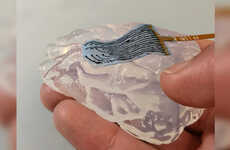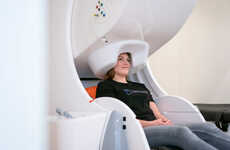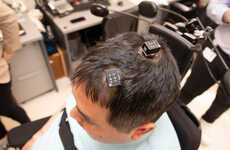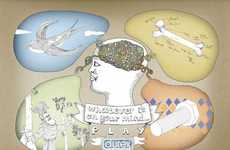
Study Shows Gay Brain Resembles Opposite Sex
mediterranean — June 20, 2008 — Lifestyle
Have we finally found the answer to whether homosexuality is a lifestyle choice or a biological trait?
A new Swedish study has revealed that gay men and heterosexual women have brain halves of a similar size. On the other hand, the right brain side is bigger in lesbian women and heterosexual men. The research and its findings were published in the Proceedings of the National Academy of Sciences journal.
In a first of its kind of study, the scientists at Karolinska Institute in Sweden used magnetic resonance imagery (MRI) to look for the source of cognitive abilities difference between homosexuals and heterosexuals. They investigated two separate parameters that are unlikely to be directly affected by learned patterns and behavior. The test group comprised 90 men and women—50 heterosexual and 40 homosexual.
According to BBC, “When these results were collected, it was found that lesbians and heterosexual men shared a particular “asymmetry” in their hemisphere size, while heterosexual women and gay men had no difference between the size of the different halves of their brain. In other words, structurally, at least, the brains of gay men were more like heterosexual women, and gay women more like heterosexual men.”
They go on, “A further experiment found that in one particular area of the brain, the amygdala, there were other significant differences. In heterosexual men and gay women, there were more nerve “connections” in the right side of the amygdala, compared with the left. The reverse, with more neural connections in the left amygdala, was the case in homosexual men and heterosexual women.”
Dr Qazi Rahman, a lecturer in cognitive biology at Queen Mary, University of London, said, “As far as I’m concerned there is no argument any more - if you are gay, you are born gay. The brain network which determines what sexual orientation actually ‘orients’ towards is similar between gay men and straight women, and between gay women and straight men.”
A new Swedish study has revealed that gay men and heterosexual women have brain halves of a similar size. On the other hand, the right brain side is bigger in lesbian women and heterosexual men. The research and its findings were published in the Proceedings of the National Academy of Sciences journal.
In a first of its kind of study, the scientists at Karolinska Institute in Sweden used magnetic resonance imagery (MRI) to look for the source of cognitive abilities difference between homosexuals and heterosexuals. They investigated two separate parameters that are unlikely to be directly affected by learned patterns and behavior. The test group comprised 90 men and women—50 heterosexual and 40 homosexual.
According to BBC, “When these results were collected, it was found that lesbians and heterosexual men shared a particular “asymmetry” in their hemisphere size, while heterosexual women and gay men had no difference between the size of the different halves of their brain. In other words, structurally, at least, the brains of gay men were more like heterosexual women, and gay women more like heterosexual men.”
They go on, “A further experiment found that in one particular area of the brain, the amygdala, there were other significant differences. In heterosexual men and gay women, there were more nerve “connections” in the right side of the amygdala, compared with the left. The reverse, with more neural connections in the left amygdala, was the case in homosexual men and heterosexual women.”
Dr Qazi Rahman, a lecturer in cognitive biology at Queen Mary, University of London, said, “As far as I’m concerned there is no argument any more - if you are gay, you are born gay. The brain network which determines what sexual orientation actually ‘orients’ towards is similar between gay men and straight women, and between gay women and straight men.”
Trend Themes
1. Biological Basis of Homosexuality - The study reveals that homosexuality has a biological basis, challenging the perception that it is just a lifestyle choice.
2. Brain Asymmetry and Sexual Orientation - The research shows that brain asymmetry is linked to sexual orientation, suggesting potential neurological factors that contribute to homosexuality.
3. Role of the Amygdala in Sexual Orientation - The study highlights the role of the amygdala in determining sexual orientation, opening up possibilities for further research and understanding of the brain mechanisms involved in homosexuality.
Industry Implications
1. Neuroscience - The findings present opportunities for neuroscience research to explore the connection between brain structure and sexual orientation, potentially leading to breakthroughs in understanding the brain's role in shaping sexual preferences.
2. LGBTQ+ Advocacy - The scientific evidence of a biological basis for homosexuality can strengthen advocacy efforts for LGBTQ+ rights by challenging discriminatory beliefs and promoting acceptance.
3. Mental Health and Therapy - The study's insights can inform mental health professionals and therapists in providing more compassionate and affirming care for LGBTQ+ individuals, considering the neurological aspects of sexual orientation.
2.2
Score
Popularity
Activity
Freshness























